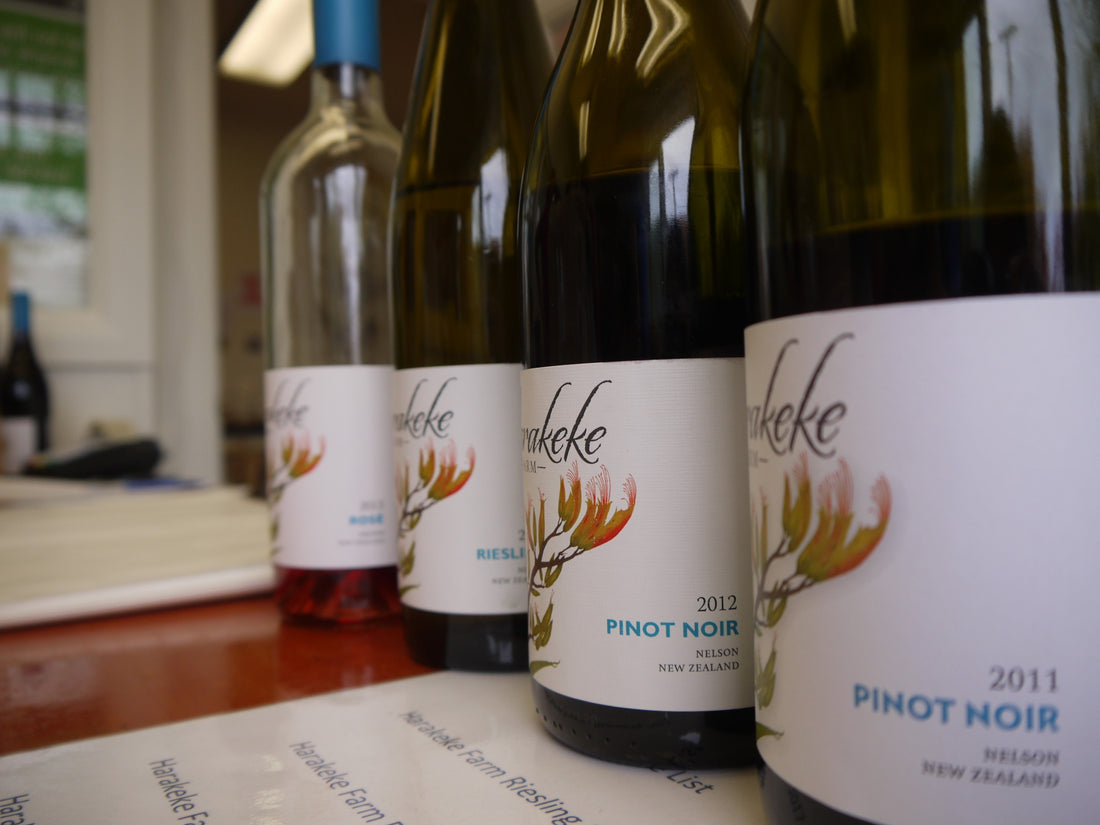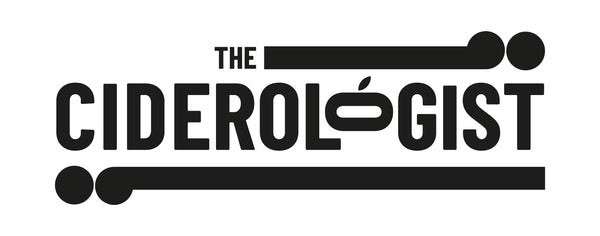
In Praise of Artisans: From Marcle to Moutere
Share
One of the delights of a British Bank Holiday Weekend is battling through the traffic to visit an event of some description, like an open garden or a food and drink festival, wading amongst hordes of stressed parents and rampaging children, whilst attempting to seek cover from the lashing rain. Alright, maybe this is somewhat of a stereotype, but a justified one I contend. Nevertheless, there are some fabulous events hosted throughout the UK every year by passionate people who want to show the public what’s important to them.
My personal favourite has to be The Big Apple, a biannual celebration of orchards, and their produce, within the parishes of the Marcle Ridge, in Herefordshire. Held at Blossomtime and Harvestime, the two Big Apple events highlight the work of the artisans of this landscape, the guardians of the local heritage, if you will. The cider heritage of this region is celebrated through cider making demonstrations, apple displays, orchard walks, poetry readings and, most crucially, cider tastings and sales. The 2015 Blossomtime event took place over the May Bank Holiday weekend, and by all accounts is was a fabulous success once again, with hundreds of people visiting this rural location to celebrate its orchard-based heritage.
Sadly, I wasn’t able to attend this jamboree as I have been living in New Zealand for a couple of years. This country is certainly not short on breathtaking and inspiring scenery; and it has a strong and proud cultural tradition through the Maori, the indigenous people. But being the relatively young nation that it is, New Zealand can’t compete with the UK in terms of a legacy in fine art, literature, architecture etc. In short, I miss events, like The Big Apple, that exude heritage and charm.
I am fortunate, however, that I reside in one of the oldest European settlements in the South Island - a wee little village called Upper Moutere. Originally named Sarau by its founding German occupants (and home to purportedly New Zealand’s oldest pub, The Moutere Inn) the village and its surrounds are occupied by a huge number of creative people, including cheese makers, potters, mushroom growers, sculptors, wine makers and a cider maker.
Collectively, these folk have formed a group called the Moutere Artisans - a body that showcases their talent and produce. Late in October, on the Labour Day Bank Holiday, (the NZ equivalent of the May Bank hols) a ‘Meet the Artisans’ day provides the public with the opportunity to see and sample the delights of these creatives, and visit them in situ.
As one of the highlights of the Upper Moutere calendar, I decided to undertake a cycle tour around the village to meet some of the artisans. What struck me throughout the day was that although this was very much a ‘new world’ celebration (30 year old vines vs 300 year old perry pear trees), the passion, quality and sincerity of the artisans drew many comparisons to the Big Apple in my mind.
Events such as this are best shared with friends, and so an eclectic posse, including representatives from England, Ireland, New Zealand and Canada, joined me on a two-wheeled sojourn around Upper Moutere. Our first port of call was to the Old Post Office, where we met Andrew Sutherland, proprietor of Harakeke Farm wines. Having worked in the Nelson wine industry for many years, these wines represent the produce from Andrew’s own 3 hectare farm, nestled up in the Moutere Hills. We sampled Riesling, Pinot Noir and Pinot Rose, and had a unique opportunity to have a vertical tasting of Chardonnays spanning 2010-2013.
The star of the show was the 2010 Chardonnay: a multi-layered and superbly structured offering from a classic vintage. Made exclusively in puncheons, blending some casks put through malo and others retaining their gentle acidic bite, flavours of vanilla and toffee combined with a gentle, gripping astringency to make this the winner. Everyone’s reaction was just to go “Mmmmmmmm”. Sod’s law, of course, then that there is only one case of this left in the world, and therefore this masterpiece wasn’t even for sale. Bugger!
Next up (with a minor detour to pick up a Banoffee Pie for later, ingeniously transported in a bucket dangling from the Irishman’s handlebars) was Peckham’s Cider. Cycling up through a parade of amaranth-pink blossom was quite a sight to behold, not least because October is a confusing month to be seeing blossom for a Northern Hemispherite such as I.
Peckham’s are a former employer of mine and are the pioneers of traditional, English style cider in New Zealand. Some of their ciders are made from dessert apples, but most significantly they spent many years scouring the country for bittersweet and bittersharp cider apple varieties to take graftwood cuttings from. The grafts have come good and husband and wife team Alex and Caroline are now producing some truly classy ciders.
Favourites amongst the troupe included the Cider with Elderflower, which had remarkably potent herbaceous notes, familiar to anyone who is a fan of Marlborough Sauvignon Blanc. Popular amongst the contingent also was the Cider with Cardamom, which tastes much better than it sounds on paper. Gentle, fragrant aromas combine with tangy acid and perfect sweetness to make a wonderfully balanced drink. One can imagine it being drunk on the verandah of some majestic colonial villa in the Subcontinent, providing refreshing relief from the incessant heat.
The piece de resistance of Peckham’s cider, however, was their 2013 Home Block #2, long matured and made from proper English cider apple varieties, including Knotted Kernel, Chisel Jersey, Kingston Black, Tremlett’s Bitter and Dabinett amongst many others. The highest compliment I can give this cider is that it tastes like a quality offering from a respected UK producer like Sheppy’s, Oliver’s or Newton Court. I hear the chap who made the blend had fun standing at the bench at 9am putting this little beauty together.
And so finally we entered into the home straight, and with time to visit just one more artisan, we zig-zagged up the resplendently verdant driveway to Neudorf Vineyards. Established by Tim and Judy Finn over 30 ago, and specifically located on the Clay Gravels of the Moutere, these guys are widely regarded as one of New Zealand’s top producers, with their Chardonnay reputed to be the Country’s finest. A tasting at the impeccable cellar door did nothing to dispel those accolades.
Although near neighbours of mine (I live 200m away) I haven’t visited Neudorf anywhere near often enough as I should have, and the opportunity to sample some truly luxuriant wines was a treat for all of us. The 2013 Nelson Chardonnay stood out for me with its density of fruit, complexity and downright sexiness. It’s one of those drinks you want to crack open with friends so you can share the wondrousness, but then immediately regret that you didn’t keep it all to yourself.
And lo, the sampling ceased and we coasted down the hill to my gaffe with cheer in our hearts and wine in our bladders. But the fun didn’t stop there. Over the preceding week, I had managed to accumulate a number of different ‘home made’ ciders from friends who, knowing my passion for Ciderology, insisted I tried their wares and give some feedback. If I’m honest, I wasn’t expecting a pleasant experience as the candidates were a rum looking bunch: old beer bottles with half scraped off labels and rusting caps; plastic bottles with hazy, opaque contents; and others with undulating folds of sediment like Saharan sand dunes.
Ah well, in the name of science and education we decided to pop them open and I conducted a tasting. And would you Adam and Eve it, every one of the ciders was exceptionally well made. None of them had any traces of the classic flaws from home made offerings such as acetic acid (vinegar) or hydrogen sulphide (eggy). In fact, they were pretty bloody good.
They were all made with different varieties which brought a host of different flavours and characteristics. One was a blend of Granny Smith and Concord Pear, another made from an unknown soft, sweet eating apple; and another was the produce of fruit scrumped from the side of the road, providing some real bite. The differences between the ciders was marvellously pronounced and each brought something different to the table. As it often the case when I conduct a tasting session, every person had a different preference.
Sat around the table, with good cider and good company, tired after consuming some truly exceptional, artisanal drinks; and bellies bulging from indulgent desserts, we could have been 11,500 miles away in the rolling Herefordshire countryside at The Big Apple. You can take the boy out of the ‘Shire....




